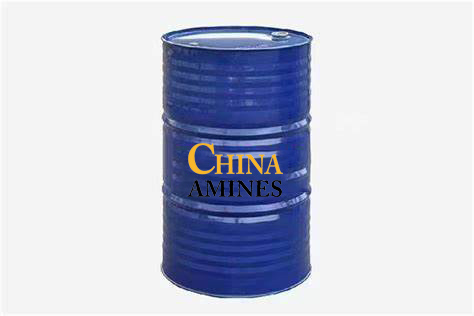1. Chemical Structure and Properties
Molecular Formula: C₃H₈O₂
Structural Formula:
CH₃OCH₂CH₂OH
A glycol ether combining a methoxy group (-OCH₃) and a hydroxyl group (-OH) on adjacent carbons.
Physical Properties:
Appearance: Clear, colorless liquid with a mild ether-like odor.
Boiling Point: 124–125°C; Density: 0.96 g/cm³; Vapor Pressure: 6.7 mmHg at 25°C.
Solubility: Fully miscible with water, alcohols, and most organic solvents (e.g., acetone, ethyl acetate).
Chemical Properties:
Hydrolysis Resistance: Stable under neutral conditions; decomposes in strong acids/bases.
Flammability: Combustible (flash point: 43°C; autoignition temperature: 285°C).
Reactivity: Forms hydrogen bonds with polar substances; participates in esterification and etherification reactions.
2. Industrial Applications
Coatings & Inks:
Coalescing Agent: Enhances film formation in waterborne paints and latex adhesives.
Solvent: Dissolves nitrocellulose, resins, and dyes in printing inks.
Electronics Manufacturing:
Photoresist Developer: Cleans residues in semiconductor lithography processes.
PCB Cleaning: Removes flux and soldering residues.
Pharmaceuticals:
Reaction Medium: Solvent for synthesizing heat-sensitive APIs and antibiotics.
Textile Processing:
Dye Carrier: Improves dye penetration in synthetic fabrics.
3. Safety and Toxicology
Health Hazards:
Acute Exposure:
Inhalation (≥25 ppm): Irritates respiratory tract, causes headaches, and dizziness (TLV-TWA: 5 ppm).
Skin Contact: Rapid absorption leads to systemic toxicity; causes defatting and dermatitis (rabbit skin LD₅₀: 1,300 mg/kg).
Ingestion: Highly toxic (oral LD₅₀ rat: 890 mg/kg); induces metabolic acidosis and hemolysis.
Chronic Effects:
Reproductive Toxicity: Teratogenic and embryotoxic in animal studies (EU CLP: Repr. 1B).
Hematotoxicity: Damages bone marrow and red blood cells (linked to anemia in occupational settings).
Protection Measures:
PPE: Impermeable gloves (e.g., Viton®), full-face respirators, and chemical-resistant clothing.
Storage: Sealed containers in cool, ventilated areas away from oxidizers.
4. Environmental and Regulatory Compliance
Environmental Impact:
Aquatic Toxicity: LC₅₀ (fish, 96h): 100–200 mg/L; moderate bioaccumulation (log Kow: -0.77).
Biodegradability: Slow (OECD 301F:<20% in 28 days); persists in groundwater.
VOC Emissions: Classified as a volatile organic compound (VOC) under EU/US regulations.
Regulatory Frameworks:
EU:
REACH: Restricted in consumer products (Annex XVII); banned in cosmetics and pharmaceuticals.
CLP: Classified as Repr. 1B (H360D), STOT RE 1 (H372).
USA:
OSHA: Permissible Exposure Limit (PEL): 5 ppm (8-hour TWA); listed as a hazardous air pollutant (HAP).
China:
GB 13690-2009: Classified as Hazardous Chemical (Class 6.1).
Waste Management:
Incineration: High-temperature (>1,000°C) with NOₓ scrubbing.
Bioremediation: Limited effectiveness due to slow degradation.
5. Case Studies and Application Insights
Case 1: Phase-Out in Semiconductor Industry (Taiwan, 2020):
Challenge: Replace Methyl Cellosolve in photoresist developers due to reproductive risks.
Solution: Adopted propylene glycol monomethyl ether (PGME) with equivalent solvency.
Result: Eliminated worker exposure incidents and met EU REACH compliance.
Case 2: Safer Paint Formulation (PPG Industries, 2022):
Process: Replaced Methyl Cellosolve with ethoxyethanol in waterborne coatings.
Outcome: Reduced VOC emissions by 30% and achieved OSHA compliance.
Comparative Analysis:
Methyl Cellosolve vs. Ethylene Glycol Monobutyl Ether (EGBE):
Pros: Higher solvency for polar resins; lower volatility.
Cons: Higher toxicity and stricter regulatory restrictions.
Methyl Cellosolve vs. Propylene Glycol Methyl Ether (PGME):
Pros: PGME has lower reproductive toxicity and better biodegradability.
Cons: Higher cost and lower solvency for non-polar compounds.
Specifications:
Methyl Cellosolve is a colorless, low-odor solvent with excellent solvency and moderate evaporation rate, widely used in paints, coatings, and cleaning products, available at wholesale prices from China Amines Co.


